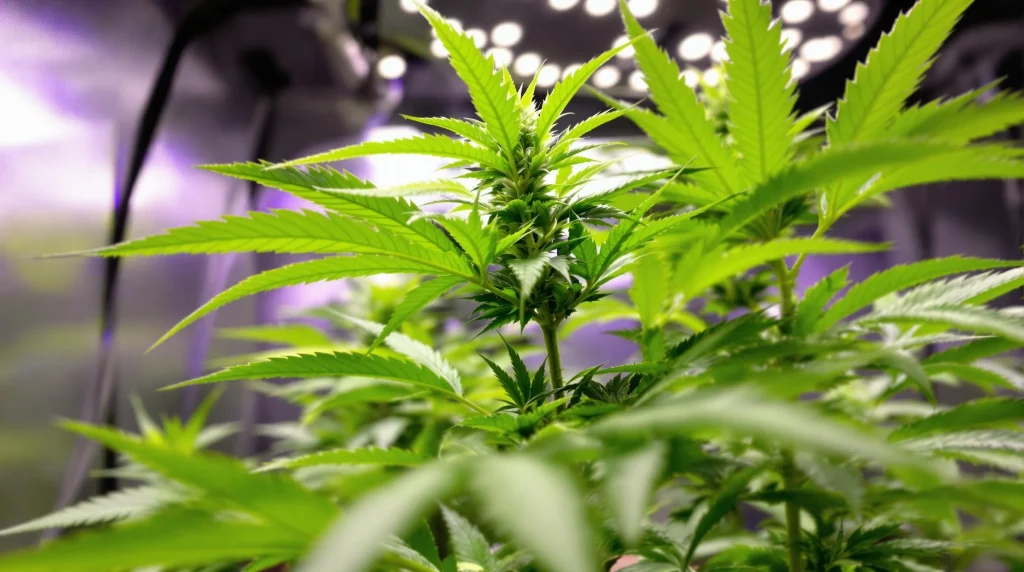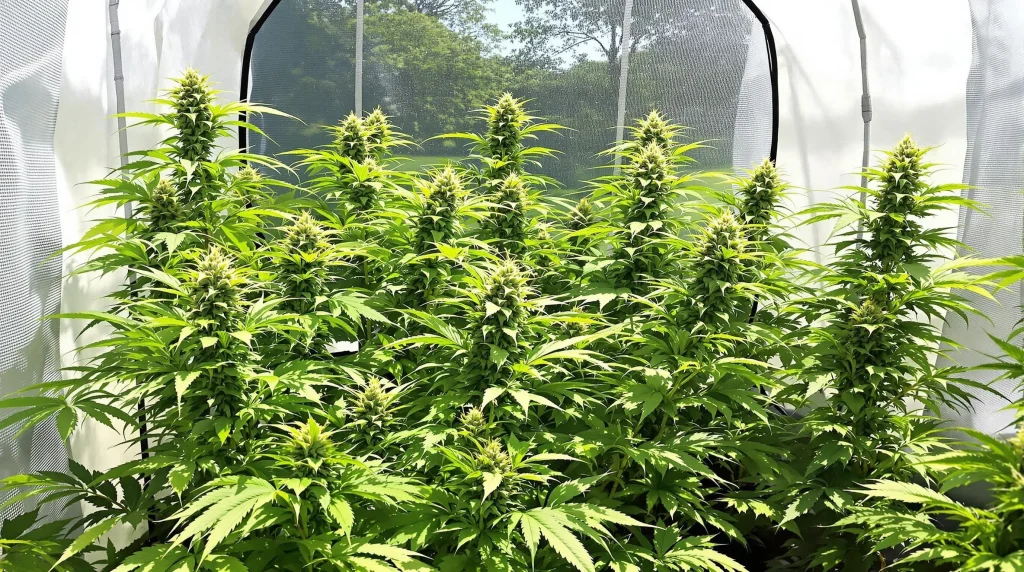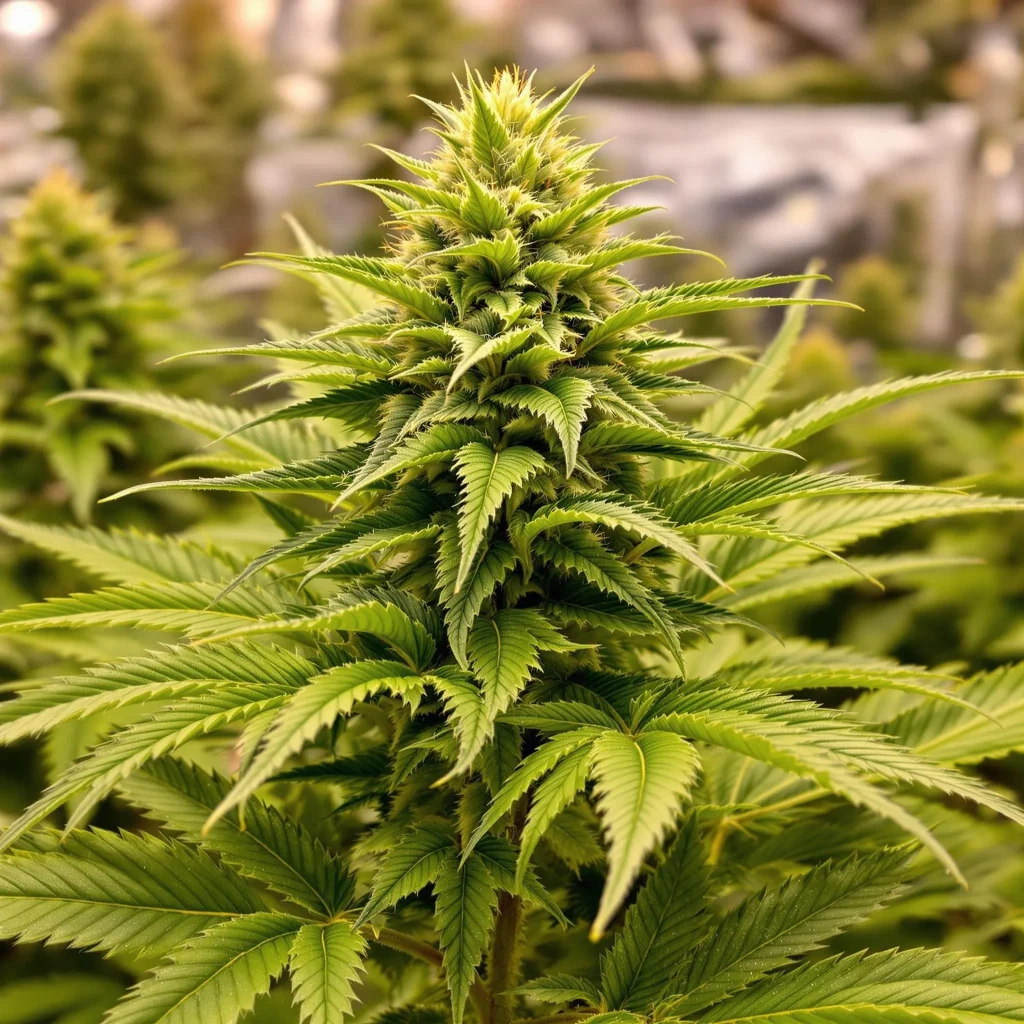Accidental flowering during veg can be a perplexing and frustrating challenge for cannabis growers. This phenomenon occurs when cannabis plants prematurely transition to the flowering stage despite being in a vegetative light cycle. Understanding why this happens and how to manage it is essential for maintaining healthy growth and maximizing yields.
What Causes Accidental Flowering in Vegetative Stage?
How Light Cycles Affect Cannabis Growth Phases
Cannabis plants rely on specific light cycles to determine their growth stages. During the vegetative phase, they require long light periods, typically 18-24 hours daily. If the light cycle is disrupted or shortened to mimic flowering conditions (12 hours or less), plants may prematurely enter the flowering stage. This sensitivity to light schedules is particularly pronounced in photoperiod strains, where consistency is key to maintaining vegetative growth.
Long interruptions or irregular light patterns can also confuse plants. For example, power outages or timer malfunctions may inadvertently signal the plant to shift growth phases. Ensuring consistent lighting eliminates this common trigger for accidental flowering.
Stress Factors That Trigger Premature Flowering
Stress can also play a significant role in accidental flowering during veg. Environmental stressors such as extreme temperature fluctuations, nutrient imbalances, or inconsistent watering schedules can confuse the plant’s internal growth signals. Stress can force the plant to focus on reproduction rather than vegetative growth. Additional triggers include transplant shock, pest infestations, or overcrowding, all of which disrupt the plant’s natural growth rhythm.
Common Signs of Accidental Flowering
Early Formation of Pistils or Buds
One of the first indicators of accidental flowering is the appearance of pistils or small bud formations on the plant. These are clear signs that the plant has shifted focus from vegetative to reproductive growth. Typically, these signs emerge at the nodes where leaves meet stems, signaling the plant’s readiness to reproduce prematurely.
Even minor bud development can redirect energy away from vegetative growth. Identifying these early signs allows growers to take corrective measures before the plant fully commits to flowering.
Slowed Vegetative Growth
Another common sign is a noticeable slowdown in vegetative growth. Leaves may stop expanding, and the plant’s overall height increase may stall. This stagnation occurs as the plant reallocates energy towards flower production. Branching may also appear less vigorous, further indicating a shift in growth priorities.
Monitoring growth rates closely helps detect this issue early. Plants showing reduced vigor during the veg stage often signal an underlying problem requiring immediate attention.
Changes in Leaf Structure and Appearance
During accidental flowering, leaves may become narrower or exhibit traits typical of the flowering stage. The plant’s structure might start resembling a flowering plant, with bud sites becoming more prominent. Leaf textures may also change, becoming waxier or darker green, reflecting hormonal shifts within the plant.
Preventing Accidental Flowering During Veg
Maintaining Proper Light Cycles
Ensure that your grow lights provide consistent, uninterrupted light periods of 18-24 hours during the vegetative stage. Even a brief exposure to darkness can confuse photoperiod-sensitive plants and trigger flowering. Timers and automated systems help maintain precise schedules, minimizing human error.
Use light meters to measure intensity and ensure even coverage. Avoid light leaks in indoor grow spaces, as stray light during dark periods can disrupt the plant’s natural rhythm, leading to premature flowering.
Avoiding Environmental Stress
Create a stable growing environment by maintaining optimal temperature and humidity levels. Consistency reduces the likelihood of stress-induced flowering. Ideal temperatures for veg range between 70-85°F, with humidity levels around 50-70%.
Minimize external stressors like drafts, sudden temperature changes, or overcrowding. Providing adequate spacing and ventilation further reduces environmental challenges that could lead to accidental flowering.
Ensuring Consistent Nutrient and Watering Schedules
Stick to a balanced nutrient schedule tailored for vegetative growth. Overfeeding or underfeeding can stress plants and cause unwanted changes. Similarly, avoid irregular watering practices to prevent root stress. Establishing a predictable routine ensures plants remain healthy and focused on vegetative development. Using soil moisture meters or automated watering systems can help maintain consistency. Ensuring soil remains well-drained and aerated prevents waterlogging and nutrient lockout.
Managing Accidental Flowering to Minimize Impact
Adjusting Light Cycles to Revert to Vegetative Growth
If accidental flowering occurs, immediately return the plant to a vegetative light cycle (18-24 hours of light). In most cases, this will help the plant revert to vegetative growth. However, patience is required, as it may take 1-2 weeks for the plant to fully transition back.
During this adjustment period, monitor environmental conditions closely to avoid further stress. Consistent lighting and nutrient application are key to successful recovery.
Pruning or Training Techniques to Redirect Growth
Remove premature bud sites to encourage the plant to focus on vegetative growth. Low-stress training (LST) can also help redirect energy to the desired growth areas. Removing damaged or overcrowded branches improves airflow and light penetration, promoting healthier development.
Strategic pruning helps manage plant height and structure, especially for tall-growing sativa strains prone to accidental flowering. Early intervention prevents wasted energy on unwanted flower development.
Switching to Veg-Specific Nutrients
Revert to a nutrient formula designed for vegetative growth, emphasizing nitrogen to promote leaf and stem development. Avoid bloom-specific nutrients, as these encourage flowering.
Incorporating organic supplements like seaweed extract or humic acid can boost recovery. These natural enhancers support overall plant health and resilience.

Long-Term Impacts of Accidental Flowering
Reduced Yield Potential
Accidental flowering often reduces a plant’s overall yield. The energy spent on premature flowering cannot be fully recovered, impacting final bud production. Additionally, reverting to veg delays the flowering phase, extending the grow cycle. Managing stress and optimizing conditions post-reversion can mitigate yield losses. Focus on nurturing the plant back to health for the best possible outcomes.
Delays in Growth and Harvest Timeline
Reverting a plant back to vegetative growth can delay the overall growth cycle. This prolongs the time needed to reach the harvest stage. Such delays may disrupt planned harvest schedules, especially in commercial operations.
To minimize delays, ensure optimal environmental conditions and consistent care throughout the recovery process. Early intervention reduces the impact on timelines.
Effects on Plant Health and Quality
Accidental flowering can stress the plant, leading to weaker stems, smaller buds, or lower potency in the final product. Ensuring plants stay in the correct growth stage is vital for quality. Prolonged stress may also increase susceptibility to pests or diseases. Maintaining a clean and controlled environment helps protect recovering plants.
Advanced Tips for Handling Accidental Flowering
Using Supplemental Lighting for Consistency
Invest in timers and supplemental lighting to ensure plants receive uninterrupted light cycles. Automation helps maintain consistency and reduces human error. LED grow lights with adjustable spectrums offer precise control over light intensity and duration.
Stabilizing Environmental Conditions in Grow Spaces
Maintain stable temperatures (70-85°F) and humidity levels (40-60%). Ensure proper airflow and ventilation to prevent environmental fluctuations that could stress plants. Dehumidifiers or humidifiers can help achieve ideal conditions, especially in unpredictable climates.
Choosing Resilient Strains to Avoid Light Sensitivity
Opt for strains known for their resilience and adaptability. Autoflowering strains, for instance, are less sensitive to light changes and can prevent accidental flowering entirely. Robust photoperiod strains bred for stability offer better performance under variable conditions.
Researching strain characteristics before planting helps align choices with your growing environment and goals. Experienced growers often recommend hybrid strains with balanced traits for greater flexibility.
Additional Strategies to Prevent Accidental Flowering
Ensuring Proper Photoperiod Setup
Photoperiod cannabis plants are highly sensitive to changes in light cycles. To prevent accidental flowering during veg, invest in a reliable timer for your grow lights. Timers automate light schedules, ensuring your plants consistently receive 18-24 hours of light during the vegetative phase. Even a single light disruption, such as a power outage or a brief period of darkness, can confuse plants into transitioning prematurely to flowering.
Regularly check your timer settings and verify that your grow space remains completely dark during the off-light periods for photoperiod plants. Accidental flowering during veg can be avoided by consistently monitoring and maintaining your lighting setup.
Utilizing Light-Proof Grow Spaces
Ensure your grow space is completely lightproof. Even small light leaks from windows, doors, or poorly sealed grow tents can disrupt a plant’s photoperiod. Use heavy-duty lightproof materials to seal any gaps. Test the grow room by sitting inside with the lights off to identify and address any light leaks. Maintaining consistent light exposure prevents confusion in the plant’s growth cycle, reducing the chances of accidental flowering during veg.
Autoflowering Strains for Stability
If accidental flowering during veg is a frequent issue in your grow setup, consider cultivating autoflowering strains. Unlike photoperiod plants, autoflowers are genetically programmed to transition to flowering based on time rather than light exposure. This makes them an excellent choice for growers who may struggle to maintain perfect light schedules or are growing in less controlled environments. Autoflowers also mature faster, reducing the overall growth cycle and allowing for multiple harvests in a single season.
Northern Lights Auto
Northern Lights Auto is a beginner-friendly strain known for its resilience and ability to thrive under less-than-perfect conditions. Its auto-flowering genetics ensure a smooth transition from vegetative to flowering stages without reliance on light cycles. The strain offers a balanced mix of calming indica effects and sweet, earthy flavors. Northern Lights Auto is an excellent option for avoiding accidental flowering during veg.
Gorilla Glue Auto
Gorilla Glue Auto is another robust option. Its thick, resin-coated buds and high THC levels make it a favorite among growers and consumers. The strain’s auto-flowering nature ensures a stress-free cultivation process, ideal for avoiding accidental flowering during veg. This strain is particularly suited for those seeking high yields with minimal effort.
Amnesia Haze Auto
Amnesia Haze Auto delivers uplifting effects and a zesty lemon flavor. This sativa-dominant autoflower is perfect for growers looking for a resilient plant that avoids light-related stress. Its consistent performance and manageable size make it a reliable addition to any grow setup. Amnesia Haze Auto eliminates concerns about accidental flowering during veg by thriving in stable yet flexible environments.

FAQs About Accidental Flowering During Veg
Can accidental flowering permanently affect my plant?
Yes, accidental flowering can permanently impact a plant’s growth cycle. While reverting to vegetative growth is possible, the energy diverted to flowering cannot be fully recovered. This often results in reduced yields and potential delays in harvest. Proper management during recovery minimizes long-term damage.
How quickly can I revert a flowering plant back to veg?
Reverting a flowering plant to vegetative growth typically takes 1-2 weeks. This process involves restoring a consistent vegetative light cycle (18-24 hours of light daily) and ensuring optimal environmental conditions. Patience and careful monitoring are essential during this transition. Faster recovery is possible with immediate intervention and stress reduction.
Is accidental flowering more common in certain strains?
Yes, some strains are more sensitive to light changes and stress. Photoperiod strains are particularly prone to accidental flowering if light cycles are disrupted. Autoflowering strains, on the other hand, are less affected by light changes and can be a better option for growers concerned about accidental flowering. Choosing hardy strains reduces the risk of light sensitivity-related issues.

